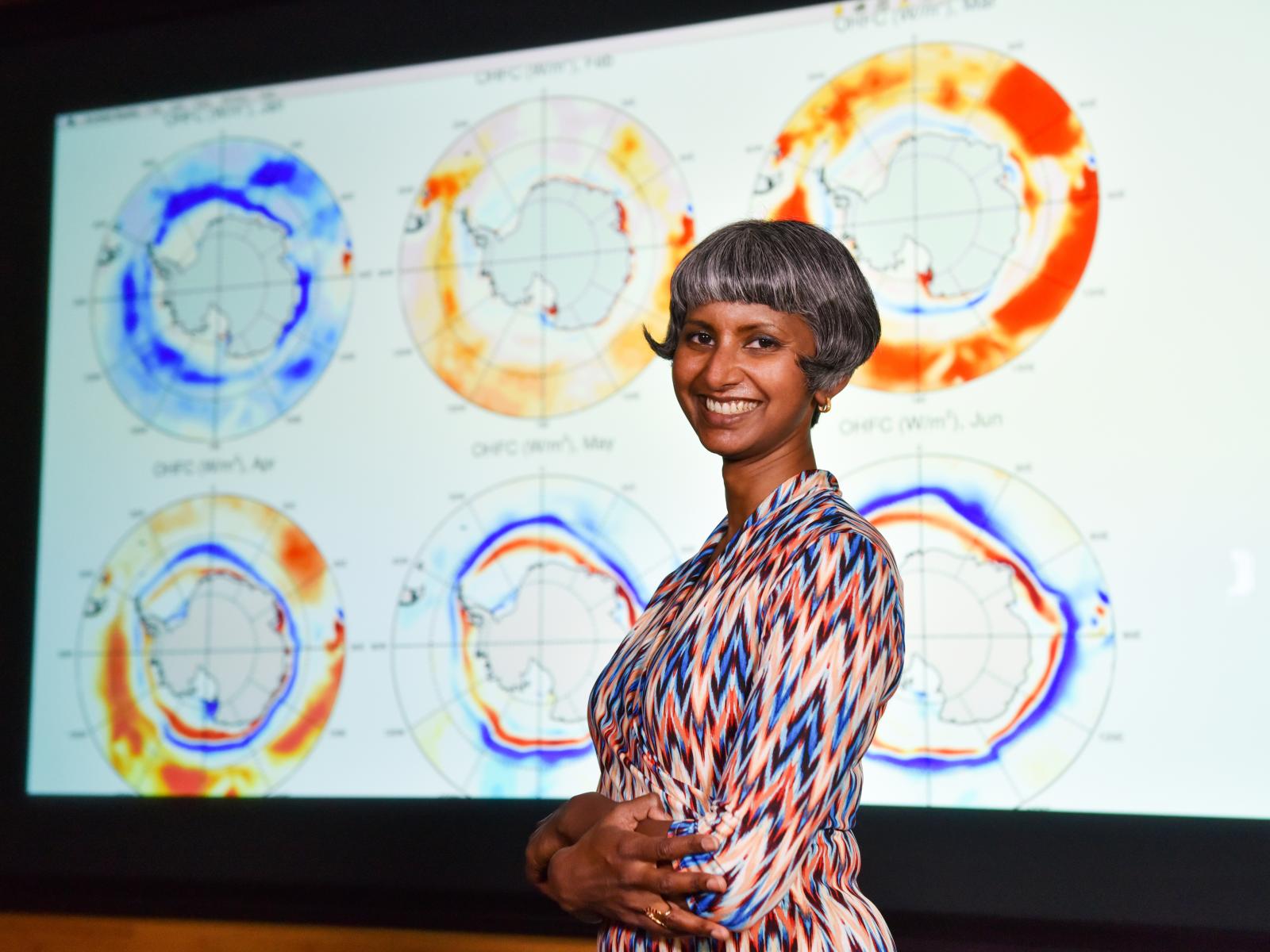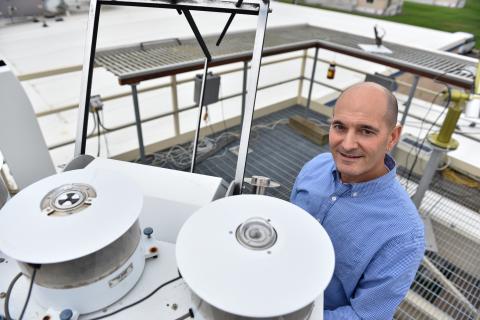PNNL on the Cutting Edge of Making Extreme Weather Predictable

Hansi Singh was chosen as a 2016 PNNL Linus Pauling Fellow. With mentorship from PNNL atmospheric scientists, she is spending her time at PNNL studying climate dynamics, with an emphasis on the Polar Regions.
(Photo by Pacific Northwest National Laboratory)
A few weeks ago, Texas was devastated by Hurricane Harvey, a once-in-500-years storm. Irma was right behind it, leaving a path of destruction in the Caribbean and Florida. It will take months, maybe years for people to recover from the damage, rebuilding their homes and their lives in the wake of storms that drenched some areas with several feet of rain in a matter of days.
These storms and their predecessors like Hurricane Sandy in 2012 or Katrina in 2005 are examples of extreme weather events. Closer to home, you might recall that last winter was one of the Tri-Cities' snowiest in decades. Yet just one year prior, the lack of snow in the Cascade Mountains led to summer water shortages and irrigation restrictions.
Scientists at the Department of Energy's Pacific Northwest National Laboratory are applying atmospheric science research capabilities to improve our understanding of long-term weather trends and better predict extreme weather events like these—and it all starts with studying clouds.

PNNL researchers are studying how clouds form, as well as the chemistry and physics at play, to better understand their role in regulating heat, moisture and particles in the atmosphere. Learning the intricate inner workings of clouds is challenging because they are constantly changing and interact with the environment in many complex ways.
For example, clouds reflect some of the sun's energy back to space, cooling the Earth's surface during the day. They also trap heat below them, often making cloudy nights warmer than clear ones. PNNL researchers use a host of cutting-edge tools—including weather radars, research aircraft, computer models and satellite measurements—to explore these complex interactions.
In one area of study, PNNL atmospheric scientists are getting a clearer picture of factors that control winter cloud patterns and western mountain snowpack. Findings from one project show that dust from Asia can increase the snowfall over California by 10 to 20 percent, while local pollution has less impact. As we learn more about how water and ice particles in clouds interact with their environment, we improve the ability to predict water availability for agriculture, power production and other important uses in years to come.

Looking at extremes, consider the stark contrast between the severe droughts in California in recent years and the torrential downpours, mudslides and flooding this past winter. Each extreme brought its own set of hardships to residents, the environment and the economy. At PNNL, our scientists are studying atmospheric rivers, which are the narrow bands of tropical moisture that stream toward the West Coast of the United States each winter and often contribute to extreme precipitation events.
When atmospheric rivers hit land, they bring more than a third of the rainfall that the western states typically receive in the course of an entire year. And when too many come too quickly, it can cause flooding. Getting better at predicting this kind of extreme rainfall would help water managers plan for the future. Specifically, our research is looking at the factors that control when and where atmospheric rivers form, how much moisture they contain and how they should be represented in computer models.
In another study, PNNL researchers figured out how to calculate certain cloud properties by combining data collected from instruments on the ground rather than relying upon research aircraft that collect data as they fly. By developing a new algorithm, researchers can now estimate the concentration of cloud droplets—important data needed to accurately represent clouds in the models that help improve our understanding of weather and climate trends.
Whether it is a summer hurricane or a winter snowstorm, PNNL scientists are learning more about clouds and shining a scientific light on their secrets. Thanks to their efforts, we will improve our ability to understand future extreme weather events—and perhaps better prepare for them.
Steven Ashby, director of Pacific Northwest National Laboratory, writes this column monthly. To read previous Director's Columns, visit pnnl.gov/news and filter by Director's Columns in our Latest Stories.
Published: September 24, 2017